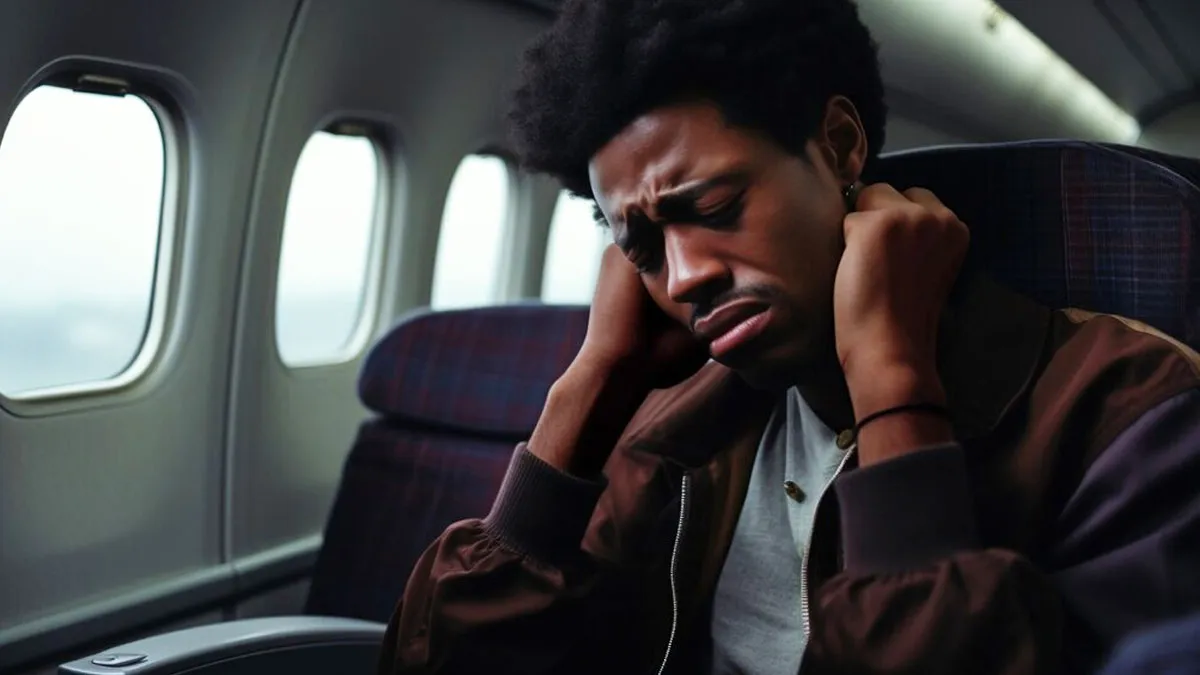
For some, flying represents adventure, exploration, or a convenient way to reach loved ones. But for others, it’s a source of intense anxiety. Flight anxiety, also known as aviophobia, affects millions of people worldwide. The good news? With the right strategies, you can take control of your fear and make flying a more comfortable experience.
Table of Content:-
CHECK YOUR
MENTAL HEALTH

What is Flight Anxiety?
Flight anxiety refers to a fear or unease associated with flying. This can stem from various triggers, such as fear of heights, enclosed spaces, turbulence, or even concerns about the plane’s safety. Symptoms of flight anxiety vary widely, ranging from mild discomfort to physical reactions like sweating, a racing heart, or even panic attacks.
Common Causes of Flight Anxiety
Understanding the root cause of your anxiety is the first step to managing it. Here are a few common reasons people experience flight anxiety:
Fear of Losing Control: The inability to influence what happens during the flight can trigger stress.
Claustrophobia: The confined space of an airplane cabin can feel overwhelming.
Fear of Turbulence: Many passengers find turbulence alarming, even though it’s a normal and safe part of flying.
Negative Past Experiences: A bad flight or hearing about aviation accidents can intensify fear.
General Anxiety: For some, flight anxiety is part of a broader pattern of anxiety disorders.
Also Read: 7 Exercises Every Woman In Her 40s Should Do
Coping Strategies for Flight Anxiety
The good news is that you don’t have to let flight anxiety hold you back. Here are practical strategies to ease your fears:
1. Educate Yourself About Flying
Learning about how airplanes work and why turbulence is usually harmless can demystify the process. Knowledge is power, and understanding the safety protocols and systems in place can provide reassurance.
2. Plan Ahead
Preparation can ease pre-flight nerves. Arrive at the airport early, choose a seat that feels comfortable (such as an aisle seat if you’re claustrophobic), and have all your travel documents organised.
3. Practice Relaxation Techniques
Deep breathing exercises, progressive muscle relaxation, and mindfulness meditation can help you stay calm during the flight. Apps like Calm or Headspace offer guided exercises tailored for travel anxiety.
Also Read: Understanding Importance Of Prenatal Vitamins: What To Take And When
4. Distract Yourself
Bring along activities to keep your mind occupied, such as books, movies, music, or puzzles. Noise-canceling headphones can also block out unfamiliar and potentially anxiety-inducing sounds.
5. Seek Support
Let the flight attendants know about your anxiety—they’re trained to help passengers feel at ease. You can also consider traveling with a trusted companion for added comfort.
6. Consider Professional Help
If your anxiety is severe, therapy may be beneficial. Cognitive-behavioral therapy (CBT) can help you identify and reframe negative thought patterns. Some airlines even offer fear-of-flying programs.
7. Use Medication Wisely
For those with extreme anxiety, a doctor may prescribe anti-anxiety medication or recommend an over-the-counter remedy. Always consult with a healthcare provider before taking any medication.
In-Flight Tips for Managing Anxiety
Even with preparation, you might still feel nervous during the flight. Here are a few additional tips:
Focus on your breathing: Inhale deeply for four counts, hold for four, and exhale for four.
Stay hydrated and avoid caffeine, which can increase anxiety.
Break the flight into manageable time blocks and reward yourself for each one.
Visualise your destination and the positive experiences waiting for you.
Final Thoughts
Flight anxiety is a common challenge, but it doesn’t have to limit your ability to travel and explore the world. By understanding your fears and using these coping strategies, you can make flying a more manageable and even enjoyable experience. Remember, every step you take to address your anxiety is a victory.
So, the next time you find yourself boarding a plane, take a deep breath, trust the process, and remind yourself: you’ve got this.
Also watch this video
How we keep this article up to date:
We work with experts and keep a close eye on the latest in health and wellness. Whenever there is a new research or helpful information, we update our articles with accurate and useful advice.
Current Version